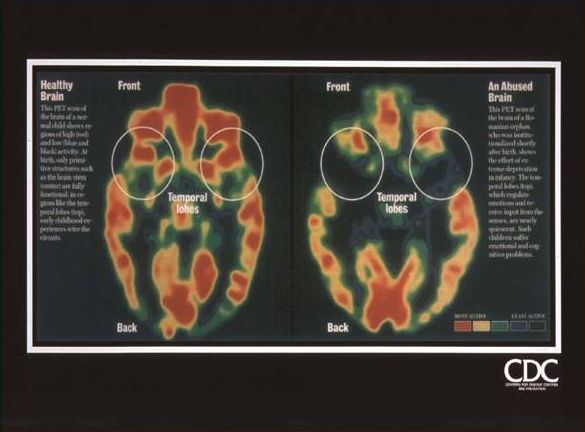Training: Trauma-Informed CARE

I was very interested in attending this training because at my current practicum, through my Culturally Affirming Responsive Education Specialist (CARES) grant, and as a court appointed special advocate (CASA), I have worked with students who live in violent communities, high risk environments, have an IEP or 504 and how are or have currently been in the foster care system. I wanted to learn more techniques that I could assist the youth, who are facing different types of traumas and I also wanted to learn about what protective factors could help make them become resilient.
At this training, I learned that
there are different types of traumatic events. There is trauma that happens
once and trauma that is recurring. Trauma can lead
a student to have mental health problems, such as chronic health conditions, substance abuse, eating disorders and depression. They are more likely to have contact with the criminal justice system, if there are no protective factors put into place. Recurring trauma in early childhood can have lasting effects in the brain. Infancy and early childhood is when the brain is growing the most; if the brain is using its pathways to respond to trauma, the brain will reduce the formation of other pathways needed for adaptive behaviors. Before the age of five there is an opportunity for interventions to be introduced to a child that has trauma in order to alter their brain in positive ways. After the age of five, there are interventions that can help repair the brain, but it will be a slower process because by age five the brain is 90% of its adult size.
a student to have mental health problems, such as chronic health conditions, substance abuse, eating disorders and depression. They are more likely to have contact with the criminal justice system, if there are no protective factors put into place. Recurring trauma in early childhood can have lasting effects in the brain. Infancy and early childhood is when the brain is growing the most; if the brain is using its pathways to respond to trauma, the brain will reduce the formation of other pathways needed for adaptive behaviors. Before the age of five there is an opportunity for interventions to be introduced to a child that has trauma in order to alter their brain in positive ways. After the age of five, there are interventions that can help repair the brain, but it will be a slower process because by age five the brain is 90% of its adult size.
 Trauma looks different on every
student. Some students may act out and others may block anyone from sharing
feelings with them. Some students will state that they have physical pain, like
a stomach pain. Other students may act angry towards teachers or other students.
Students can also act out their trauma against themselves, like cutting. One
technique that school counselors could use with students that are acting out
their trauma on themselves is to figure out what that "action" makes
them feel and try to find a healthy way that the student can
Trauma looks different on every
student. Some students may act out and others may block anyone from sharing
feelings with them. Some students will state that they have physical pain, like
a stomach pain. Other students may act angry towards teachers or other students.
Students can also act out their trauma against themselves, like cutting. One
technique that school counselors could use with students that are acting out
their trauma on themselves is to figure out what that "action" makes
them feel and try to find a healthy way that the student canfind the same relief. Also, many youth that have trauma have been through events where they might have had little or no control over. This is why it is important, as school counselors, to empower our students and help them feel in control. This could be as simple as letting them pick what chair they sit in and letting them be in control of what they decided to share or letting decided what they would like to talk about.
When picking a counseling technique
or intervention, as school counselors, we should make
sure that the techniques or interventions are
holistic, that the techniques or interventions facilitate student participation and does not traumatize the student, again. Before using any counseling techniques or interventions, we should be aware of the student's culture, environment, sexual orientation and expression.
holistic, that the techniques or interventions facilitate student participation and does not traumatize the student, again. Before using any counseling techniques or interventions, we should be aware of the student's culture, environment, sexual orientation and expression.
Finally, it is very important for us, as school counselors, to take time for ourselves. We will need to set time aside to distress, take care of our own emotions, in order to come recharged and ready to properly help our students.







No comments:
Post a Comment